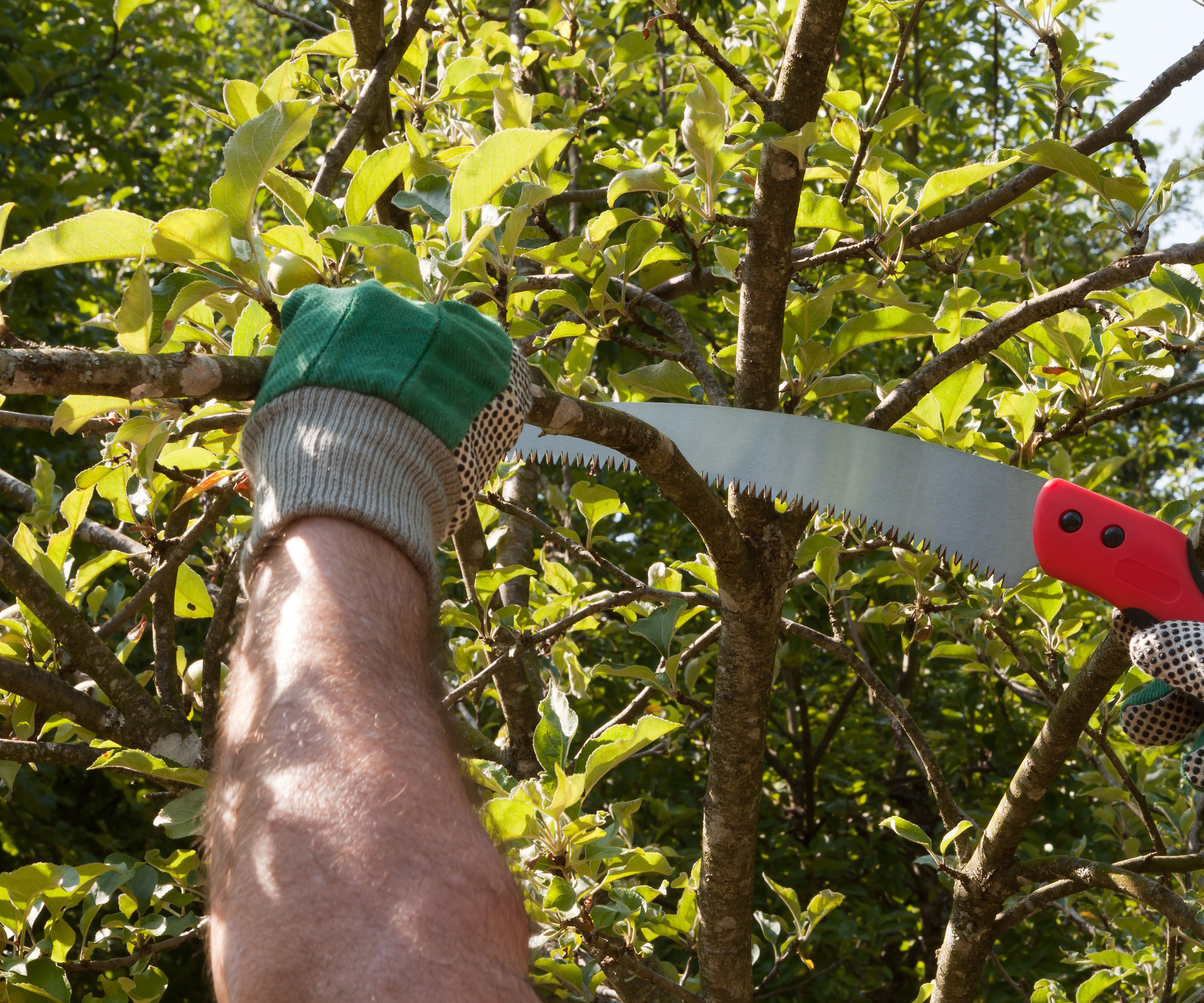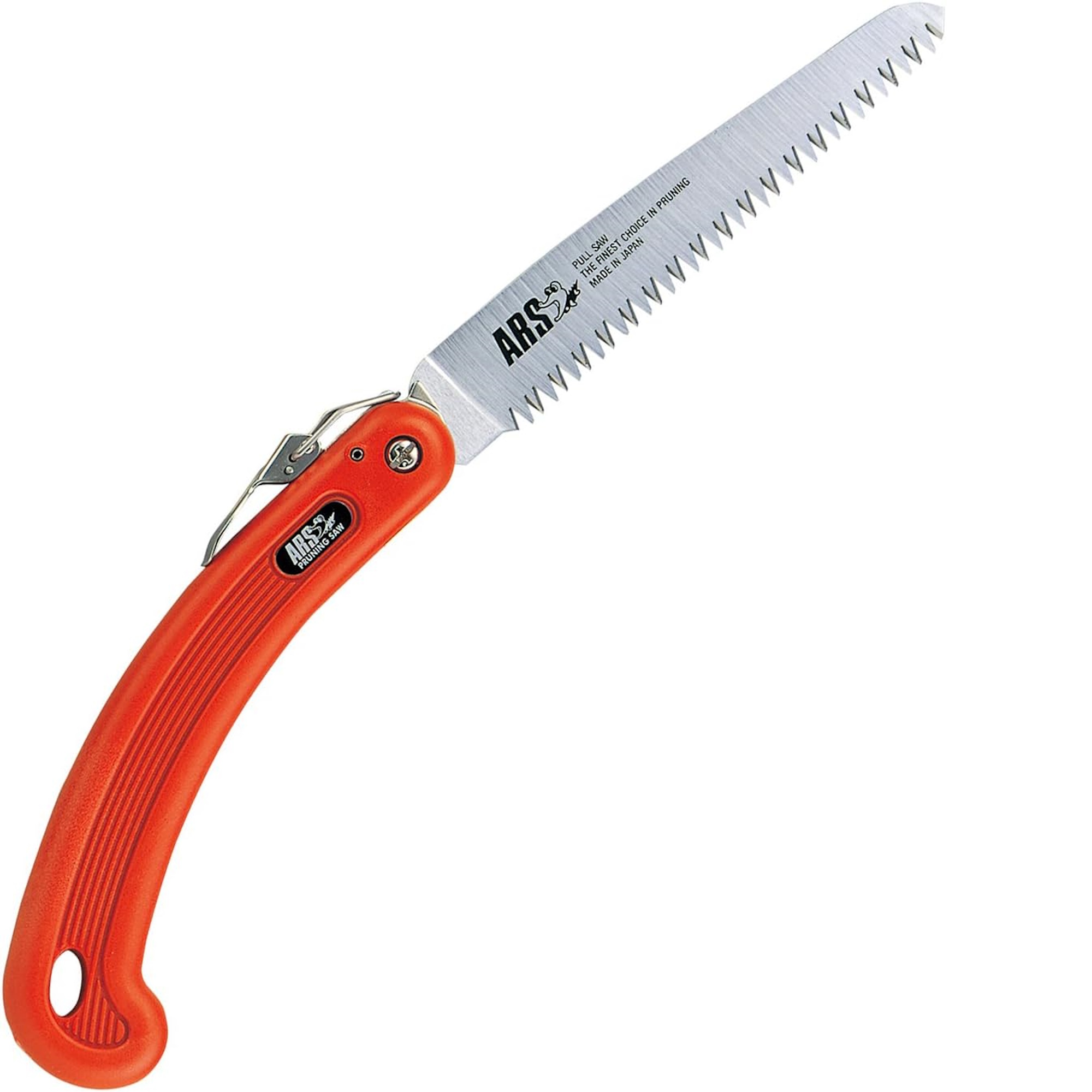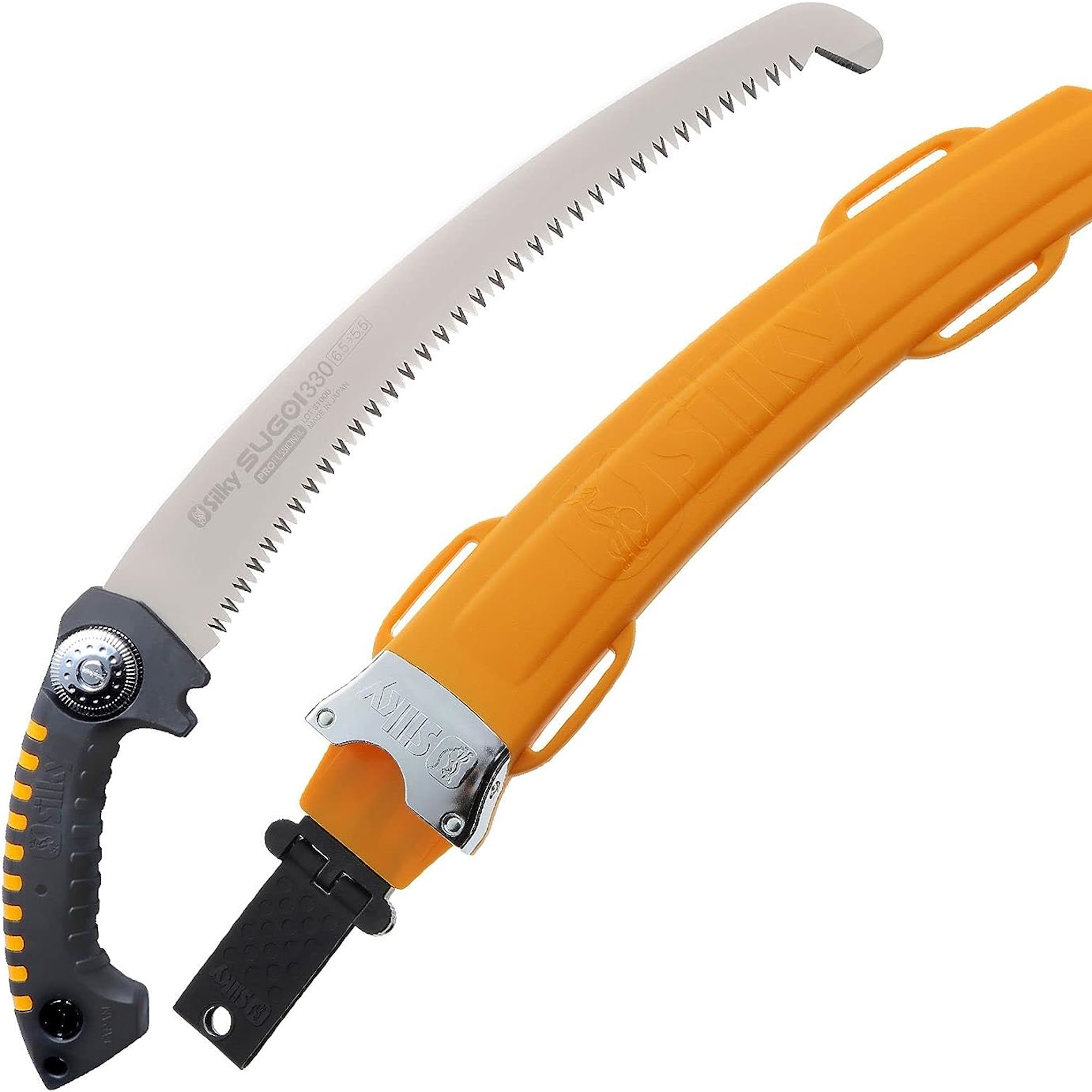What is a pruning saw and how do you use it? Our gardening expert advises
Get the lowdown on the top pruning saw uses and learn how to use this valuable gardening tool safely for a range of pruning tasks


The pruning saw is one of my must-have garden tools. They come into their own in fall and early winter when you're in one of the key pruning seasons of the year.
These are lightweight tools designed to tackle wood that pruning shears and loppers would struggle with, but that are too thin for a bow saw or chain saw.
I have two pruning saws that I use regularly. They are both exceptionally good for removing dead wood, and because they have narrow blades they can easily get into narrow or fiddly spaces between branches and trunks.
If you're not sure about what to use a pruning saw for or how to safely use one, our guide will help, and explain why there are very good reasons to add one to your arsenal of cutting equipment.

What is a pruning saw?
Pruning saws, which are also known as saw pruners, are single-bladed saws designed for removing lengths of wood that are roughly 2in in diameter.
Although they are designed to be used single-handedly, they are for heftier work than bypass or anvil pruners. They are also for jobs that don't need the weight and power of a bow saw or chainsaw.
Pruning saws are relatively inexpensive and come with straight or curved blades that either fold back against the handle (or withdraw into the handle) for safety, or come with a protective holster. They have comfortable handles and razor-sharp toothed blades that make short work of wood and materials such as hard plastics.
Design expertise in your inbox – from inspiring decorating ideas and beautiful celebrity homes to practical gardening advice and shopping round-ups.
In general, saws with straight blades are best used for comfortably cutting branches that lie between your shoulders and waist, while curved blades are better for pruning lower down or higher up.
As a rough guideline, the longer the blade the thicker wood they can cut, though a lot also depends on the strength of the blade (and the operator, of course) and its sharpness.
The two I use regularly are a Fiskars SW75, available from Amazon with a long blade that retracts into the handle, and a smaller Wilkinson Sword folding pruning saw, also available on Amazon. This folds back against the handle at the push of a button, making it perfect for stashing in trouser pockets.

Two key pruning saw uses
There are two main ways to put your pruning saw to good use in your plot. For me, these are removing a horizontal branch and pruning vertical branches.
When removing or shortening a branch, always start cutting from the top of the branch. I find the easiest way to begin is to place the blade of the saw on the wood and draw it towards me in one smooth pull applying downward pressure as I do so. This creates the initial groove where you want to cut through, making an easy path to follow.
Then start to move the saw back and forth, cutting deeper into the wood with each move. Now apply pressure on the inward push stroke as well as the outward pull as this allows shredded material to fall away so the blade doesn't get clogged.
If the saw gets stuck, don't try and force it. Instead, press down gently on the outward end of the branch to open up the pruning groove and create more room for the blade to move.
Never remove the branch completely flush against the tree trunk. Come slightly away from the trunk so the tree develops a protective 'collar' as it heals.
When doing any pruning, it's a good idea to follow the one-third pruning rule, to avoid doing any unnecessary damage to your trees and shrubs.
Pruning vertical branches with a pruning saw can potentially be more of a challenge and slightly more awkward due to the positioning of the branch.
Luckily, pruning saws are ideal for this job because their design allows you to slip the blade between trunk and branch for optimum pruning.
Begin by resting the blade on the top side of the branch a short way out from the trunk, then draw it firmly towards you. Push the saw away through the groove created by the first cut, and repeat the process. It should get easier as you cut deeper into the wood.

How do you use a pruning saw safely?
Follow these top tips to make sure you handle your pruning saw safely.
- Before starting pruning, always check the teeth are sharp, clean and not clogged with wood shaving.
- Rusty tools are a danger to plants and you, as they will work less efficiently, can carry disease and be harder to operate. If you spot rust on your saw blades, or on any tools, follow our guide on how to clean pruning shears to keep your equipment top notch.
- Wear protective gear including sturdy gardening gloves, goggles and a hard hat if cutting high or hard-to-access branches.
- Where possible, position yourself so you are cutting from above. This is especially important with larger, thicker and heavier branches as you will have gravity working in your favor. You are also less likely to risk injury than if you are cutting from below, should the branch break unexpectedly.
- If you need to stand on a ladder or platform, make sure they are securely anchored or you have someone holding them steady.
- Always clean and oil your blades after use and fold them away before locking them in suitable garden tool storage, such as a shed, where they are out of the sight and reach of children.
- Finally, if the job looks too big or dangerous for you to complete safely, bring in a professional, reputable tree surgeon.
Shop pruning saws
FAQs
What kind of pruning saw will suit me best?
There are lots of different types of pruning saws, so bear the following points in mind when choosing one.
Comfort: Most pruning saws are designed to be used one-handed and have ergonomic handles for a comfortable fit and grip. They are all fairly lightweight, which makes them easy to use for longer periods.
Blade strength: Most pruning saws are made of high quality carbon steel with sharp teeth that cut through wood easily. Many come with a guarantee or have replaceable blades. You can sometimes get blades resharpened by the manufacturer.
Space: If you don't have much shed storage space, opt for a folding pruner or one that retracts easily into its handle. Many come with hooks at the end of their handle making them easier to hang up out of the way.
Once you've finished with your pruning tasks for the season, it's really important to know how to store garden tools over winter, to keep your vital gardening kit in good condition, ready to use again come the spring.

Ruth is a Contributing Editor for Homes & Gardens, and formerly Gardening Editor of Amateur Gardening magazine. She is horticulturally trained, with a qualification from the Royal Horticultural Society. Her work for Amateur Gardening, the world's oldest weekly gardening publication, involved matching gardening tasks with each season, covering everything from sowing and planting, to pruning, taking cuttings, dealing with pests and diseases and keeping houseplants healthy. She is an expert in ornamental plants and edible crops, and everything she writes about and photographs is in her own garden, that has been a work in progress since her family moved there in 2012.


